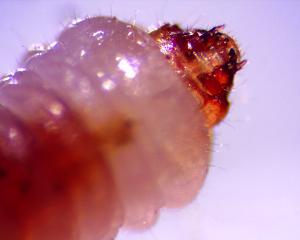Giselle Zambrano González
The aim is to analyse the diversity and trophic structure of arthropod, with focus on families present in different microhabitats in the canopy of a high Andean forest.

We want to know how canopy arthropods are structured according to the relations between all the families of arthropods that are present in the different microhabitats like bromeliads, foliage, lichen, moss and trunks in state of decomposition. All of this will be done with the use of capture traps for insects or arthropods in general, those will be installed in trees with great support and connectivity of canopy which will be randomly selected, and each one will be dedicated ten effective hours of sampling. The traps that will be used are listed: Malaise, Van Someren Rydon, light traps, Macphail and Berlesse funnels, for manual collection will be used entomological nets. For the capture of arthropods that move among the foliage four types of traps will be installed. Five traps of flight interception will be placed among the higher branches of the canopy. Five Van Someren Rydon that are formed by a cylindrical tube of open fabric in the inferior mouth where it is placed a wide plate and the attractant is added. Five light traps formed by a cylindrical structure that capture the arthropods are placed and they attract them with dark and white light. 65 Mcphail, it consists of a plastic bottle with an entrance in inverse funnel and inner it, it will contain bait as an attractant.

The field trips are going to have 13 effective sampling days with an intensity of collection of 30 days for the traps. The sampling days will be equally distributed for the assembly, trap deactivation and preparation of the material for further transportation and identification in the labs of the University of Cauca. Then with all the information we get, a food web will be built and analysed by software. Additionally we are going to characterize the diversity and the level of association of bees (Hymenoptera: Apoidea) present in different vertical layers because they maintain a close relationship with the plants that serve as a food source, nesting , mating and more importantly, for their constant visits to flowers, bees are excellent pollinators bodies of wild and cultivated plants.